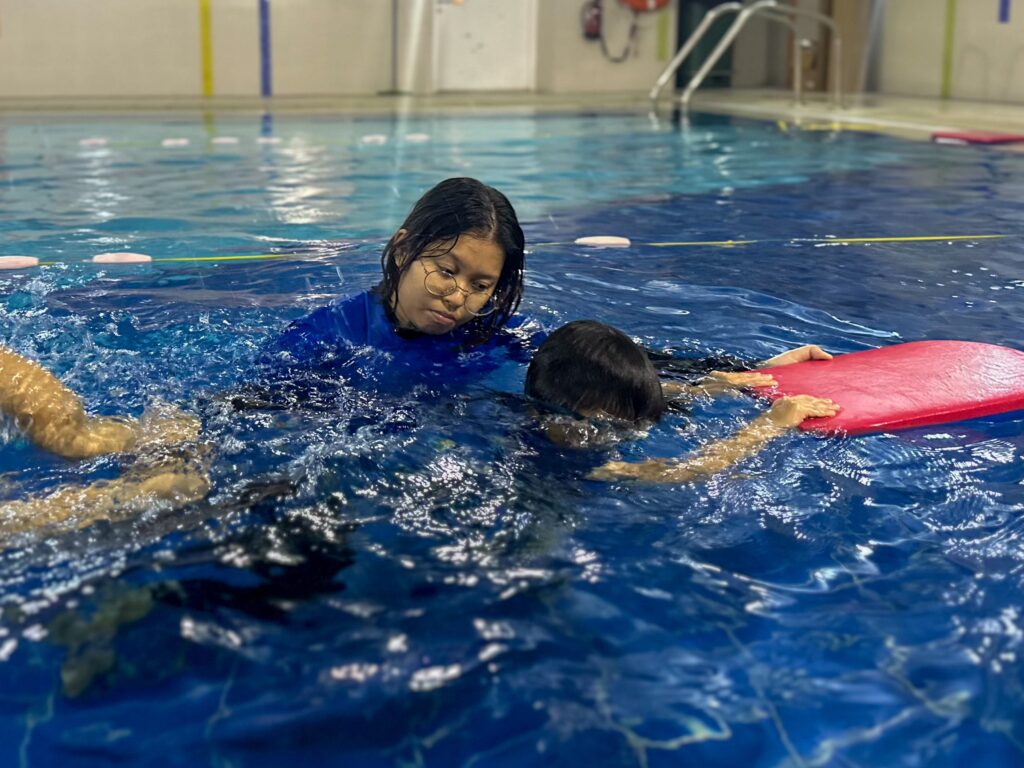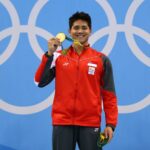Mastering 4 Competitive Strokes: Enhancing Kids’ Swimming Techniques and Skills
The mastery of competitive swimming strokes is one that takes time and dedication but is a crucial step in enhancing kids’ swimming techniques and skills. For young swimmers, focusing on refining their competitive swimming techniques can significantly improve their performance in the water. By learning proper form and advanced skills, kids not only become more proficient swimmers but also gain confidence and discipline that extend beyond the pool. The benefits of swimming for kids are well-documented, from physical fitness to mental resilience, making it an essential activity for their overall development. Let’s explore the key aspects of improving children’s swimming skills and insights into mastering competitive strokes for young swimmers.
What are the 4 competitive strokes of swimming?
Competitive swimming is built upon 4 main strokes: freestyle, backstroke, breaststroke and butterfly. Each of these 4 strokes has its own unique characteristics and history, presenting various challenges and benefits for young swimmers.
Freestyle, often referred to as front crawl, is the fastest and most popular stroke in competitive swimming. Backstroke is the only stroke performed on the back, requiring excellent body position and coordination. Breaststroke, often known by the layman as ‘frog style’ for its frog-like leg movements, is one of the oldest strokes and focuses on timing and technique. Interestingly, the butterfly stroke emerged as a variation of breaststroke and was established as an official stroke in 1952 by FINA (History of Butterfly).
The mastery of these 4 strokes are essential for success in swimming, Each stroke can be broken down into the following elements: body position, legs, arms, breathing and timing with each stroke requiring a different combination of motor skills and technique. Gross motor skills are fundamental movement patterns that uses large muscle movements (think walking, jumping, kicking, sitting, standing) and fine motor skills are smaller, precise hand and foot movements. Both gross and fine motor skills are essential for excelling in swim techniques.

Freestyle Stroke Breakdown for Kids
Why is Freestyle stroke important for kids to learn?
Freestyle is often the first stroke introduced to young swimmers, and is the fastest and most efficient of the 4 competitive strokes. It is a foundational skill in swimming techniques for kids. Being a long axis stroke, it helps to develop the coordination between the left and right side of the body and builds a foundation for bilateral breathing (breathing to both sides of the body). Mastering freestyle boosts confidence in the water, providing a solid base for learning more complex strokes later on.
How to teach kids Freestyle?
Teaching kids freestyle can be done with a step-by-step approach, from body position, to legs, arms, breathing and timing. For body position, it is essential to maintain a horizontal, streamlined position in the water with legs next to each other. This reduces drag and allows for smooth movement. Next, the leg moves in an alternating, continuous up and down fashion, with straight legs and relaxed ankles. The arm makes a firm pull with fingers pointing down to the ground, finishes next to the thigh and recovers over the water to the front. The arm movement is alternating, with a focus on finishing 1 arm pull before starting the next. Breathing involves turning the head to the side to inhale, as the arm is pulling down, followed by exhaling underwater. The timing of all these elements forms a fluid and coordinated freestyle.
[insert image of swimmer doing freestyle, preferably a side view/top down side view of the swimmer breathing on his side – caption, Freestyle breathing to the side]
Common mistakes of Freestyle
An effective freestyle is smooth and controlled, and almost gliding through the water, with a consistent rhythm. In contrast, an ineffective stroke may involve excessive splashing and disjointed arm and leg movements. Common mistakes include lifting the head too high while breathing on the side and bending the knees excessively during the kick. The head should be resting on the arm while turning to the side to breathe, and the knees should only bend naturally during the kicking motion. By correcting these mistakes early on, it prevents bad habits from forming.
Backstroke Breakdown for kids
Why is backstroke important for kids to learn?
Backstroke is a crucial component of competitive swimming for kids, and offers unique benefits that complement the other strokes. As the only stroke performed on the back, it helps children in developing better balance and spatial awareness in the water. Learning backstroke also strengthens the back, shoulder and core muscles, contributing to overall muscular development.
How to teach kids Backstroke?
The same structured approach of body position – legs – arms – breathing – coordination can be taken with backstroke. The body is similarly maintained in a horizontal and streamlined position, this time with the body facing upwards to the sky. The legs perform the same flutter kick motion, in a relaxed and rhythmic manner, maintaining balance and propulsion for backstroke. The ankles are relaxed The arm pulls through the water firmly, finishing by the thigh before it recovers over the water. Both arms move simultaneously, as one arm is entering the water and pulling, the other is recovering over the water from the thigh to the above the head. The breathing pattern in backstroke is natural, and is common for inhalation during the arm pull and exhalation during recovery. Although there is no specific breathing coordination as the face is above the water, good timing of backstroke involves continuous leg and arm movements, and relaxed breathing for a smooth and efficient stroke.
[insert image of swimmer doing backstroke, preferably a top down view, with one arm starting the pulling movement, and other starting the recovery phase- caption: Effective backstroke]
Common mistakes of Backstroke
A smooth and controlled backstroke, glides through the water with minimal splashes. Common mistakes in backstroke include misaligned head position, bent knees while kicking, and arms not moving simultaneously. A misaligned head position such as lifting of the head with ears out of the water, is a poor body position that leads to sinking hips and legs. Bent knees or the “cycling” kick disrupts the streamline position of backstroke, leading to a jerky stroke. Lastly, arms moving individually is common while kids are grasping the coordination of backstroke. By focusing on good body position, continuous leg and arm movements during the learning stages of backstroke, poor habit will be less likely to form.
Breaststroke Breakdown for kids
Why is Breaststroke important for kids to learn?
Breaststroke is the oldest of the competitive strokes and it is highly technical, emphasising on precision, timing and endurance. It engages a wide range of muscle groups, particularly the chest, arms, hips and core. The need for extensive coordination, good timing and proprioception may prove to be a challenge to young children who are still developing their motor skills, body and spatial awareness.
How to teach kids Breaststroke?
Using the same structured approach, the body position is similar to that of freestyle, a flat, horizontal position in the water. The legs movement is initiated with a knee bend, bringing the heels to the buttocks, while still keeping the knees narrow and close to each other. The ankles are then flexed with toes pointing diagonally outwards, and using the soles of the feet, water is pushed away from the body, drawing a semicircle, before closing both feet together, legs straight. The arms start extended and draw a circle towards the chest, in a scooping motion, before extending out again to the front. Breathing is initiated at the beginning of the arm movement by lifting the head, facing directly to the front when breathing, chin resting on the water surface. The head then drops back down, after 1 breath. Timing is critical in breaststroke as the arm and leg movements move in succession.
[insert image of swimmer doing breaststroke, preferably a side view, with arms pulled in and next to the chest, head up and breathing facing the front caption: Breaststroke arm pull and breathing]
Common mistakes of Breaststroke
The breaststroke kick takes time to master and it is a common hurdle for young breaststroke learners. A common mistake is crunching with the knees under the stomach during the kick initiation, instead of bringing the heels to the buttocks. This reduces the critical kick power generated. Another mistake is performing both the arm and leg movement at the same time, the timing of the movements should be prompt in succession- during the recovery of the arm pull, the leg movement is initiated. Maintaining flexed ankles throughout the kick can also be a challenge for kids who are young and lack lower body strength. Breaststroke is a challenging technical stroke to master and requires plenty of practice. It is a steep learning curve after the first 2 long axis strokes, freestyle and backstroke, but proper introduction to its foundational components and conscious work on technical aspects will contribute to positive breaststroke performance in the pool.
Butterfly stroke Breakdown for kids
Why is Butterfly important for kids to learn?
The butterfly stroke is considered the most challenging of the 4 strokes and taught last after children have learnt the first 3 strokes, but also very rewarding to master. Learning butterfly is often seen as a milestone of competitive swimming. Butterfly is upper body strength demanding and engages the core muscles, both the abdominal muscles and lower back muscles. It is the most rhythmic stroke and its powerful and flowing movements require substantial skill and precision, making it an excellent way to build overall children’s swimming abilities and athleticism.
How to teach kids Butterfly?
Using the same approach, beginning with a horizontal and streamlined body position, eyes looking to the ground. The body undulates like a wave, smoothly through the water, with the head keeping relatively still. This undulating movement leads into the butterfly kick, also known as dolphin kick. Unlike the other 3 competitive swim strokes, the legs move together, side by side, driven by the hips to contribute to the undulating motion. The arms also move together, starting with a strong pull under the body, fingers pointing to the ground, ending next to the thighs, and a sweeping straight arm motion for recovery over the water. Breathing is coordinated with the arm movement, with swimmers lifting their head to inhale as the arms pull downwards. The coordination of butterfly timing the arm pull with the down beat of the dolphin kick and the arm recovery during the upbeat of the dolphin kick. This ensures the strokes rhythm and efficiency.
Common mistakes of Butterfly
Commonly seen in kids first learning butterfly is a sinking body. The hips are sinking, resulting in kids gasping for air with each arm pull. This can be due to lifting the head too high during breathing and affecting the horizontal body alignment. An overly forceful kick that is generated using the knees and not the hips, often disrupts the body’s alignment, breaking the stroke’s fluidity. A lack of synchronisation between the arm pull and kick can also lead to a loss of momentum. Remember, butterfly is a rhythmically driven stroke.
Master Competitive Swimming at X Lab
When it comes to mastering competitive strokes, the focus for young swimmers should always be quality over quantity for practices. While frequent practice is important, ensuring that each session emphasises good technical form and precision is what leads to long term improvement for young swimmers. A high volume of training practising a poor stroke only encourages the formation of bad habits. Quality practices help to build muscle memory, increase confidence and ensure that young swimmers not only excel in the pool but also enjoy the journey of learning and mastering competitive swimming.
At X Lab, training practices for young swimmers have a strong emphasis on stroke drills to prioritise the fundamentals of good body position, leg and arm movement, breathing and stroke coordination. Competitiveness is also built through intersquad relays, where swimmers can put what they have learnt into play. A positive and holistic learning environment helps to set kids up for success in the competitive swimming world. If you are ready, take a dive with us for a free trial with our competitive swim squad.




